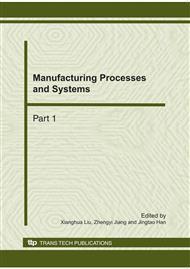p.1096
p.1100
p.1108
p.1112
p.1119
p.1124
p.1129
p.1133
p.1138
Formation of Tricalcium Silicate Prepared by Electric and Microwave Sintering
Abstract:
A microwave sintering method was used to prepare C3S from Ca(OH)2, SiO2 and MexOy. f-CaO assay, X-ray diffraction and SEM were used to characterize the sintered samples.The results indicated that ion oxides played a very important role in C3S formation in conventional sintering, the use of MexOy as an additive was so effective in promoting C3S formation. The experimental results showed that samples were heated at an electric heating temperature(1500°C) and then further sintered with microwave for 30~60 min, tricalcium silicate could be formed with kilogram step. The new burning technique can greatly increase the forming speed of tricalcium silicate, MnO2, CuO and Ni2O3 could enhance the microwave sintering.
Info:
Periodical:
Pages:
1119-1123
Citation:
Online since:
October 2010
Authors:
Keywords:
Price:
Сopyright:
© 2011 Trans Tech Publications Ltd. All Rights Reserved
Share:
Citation:


